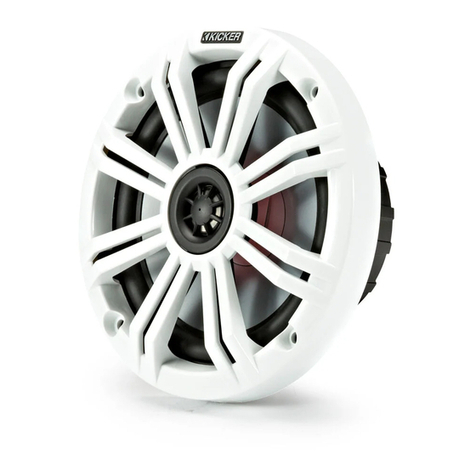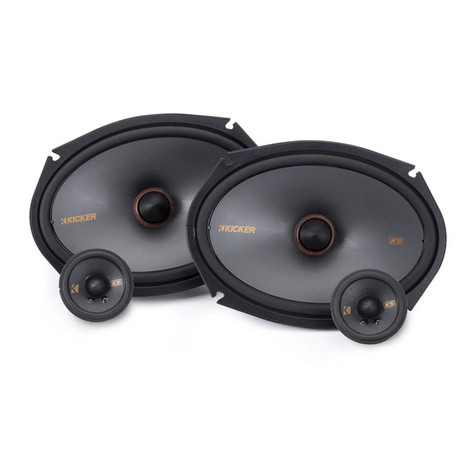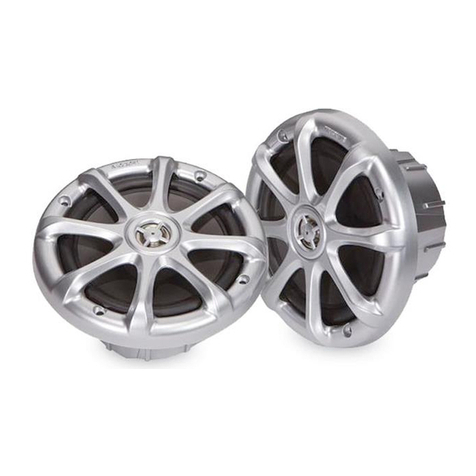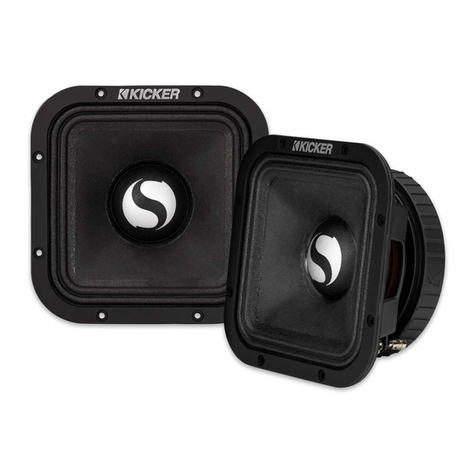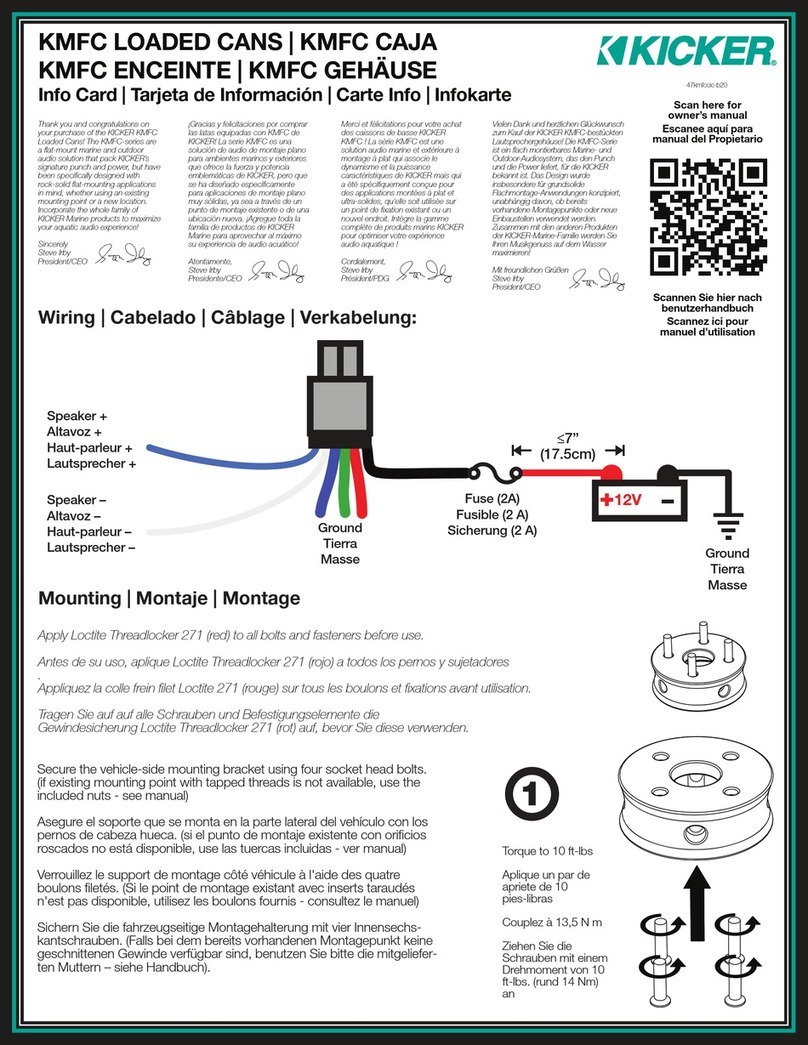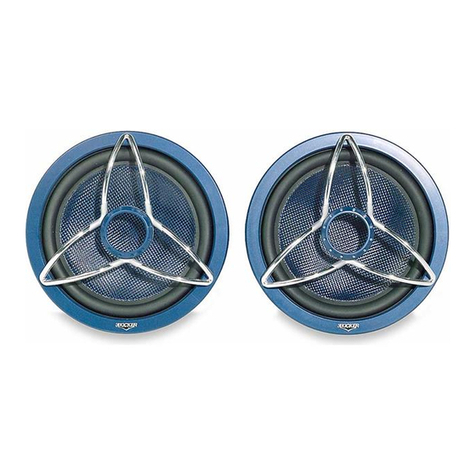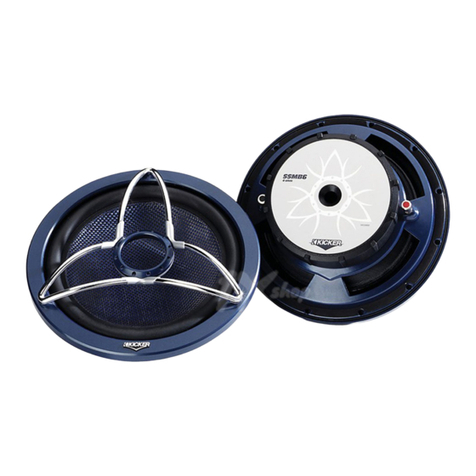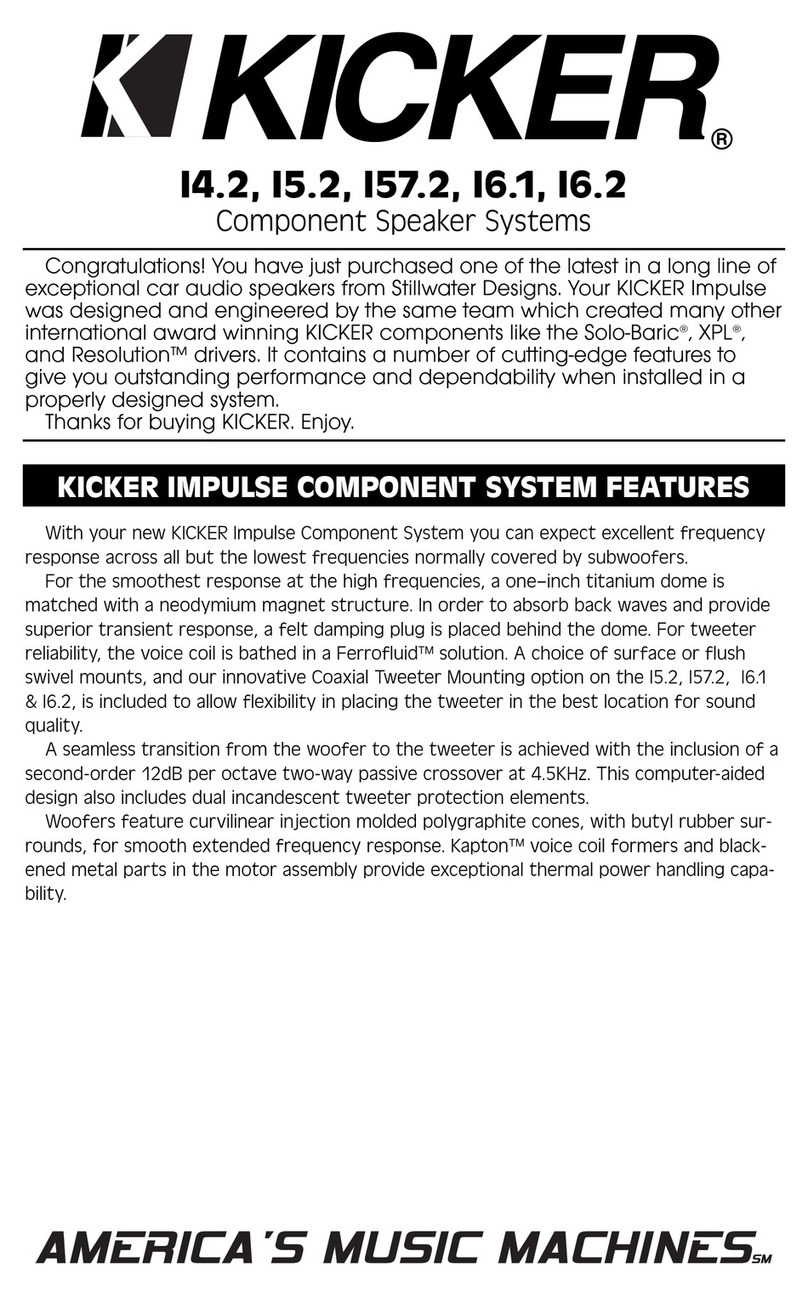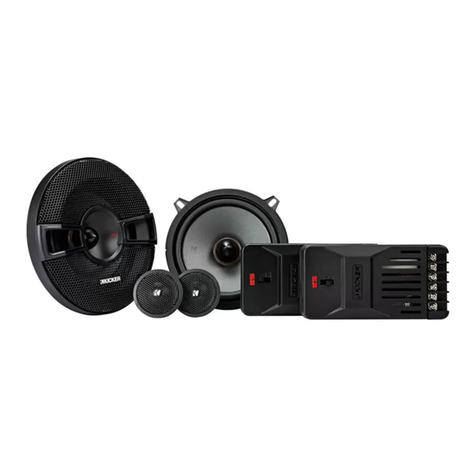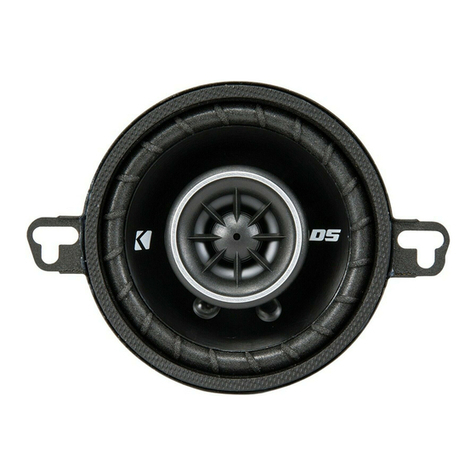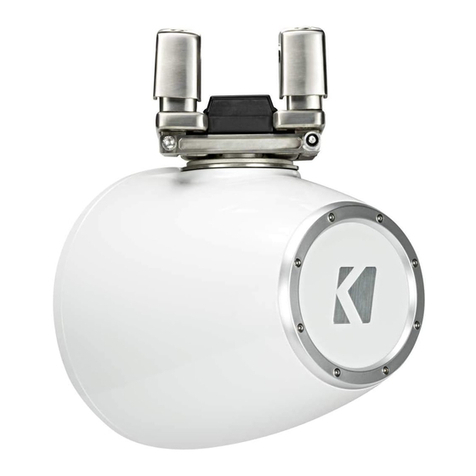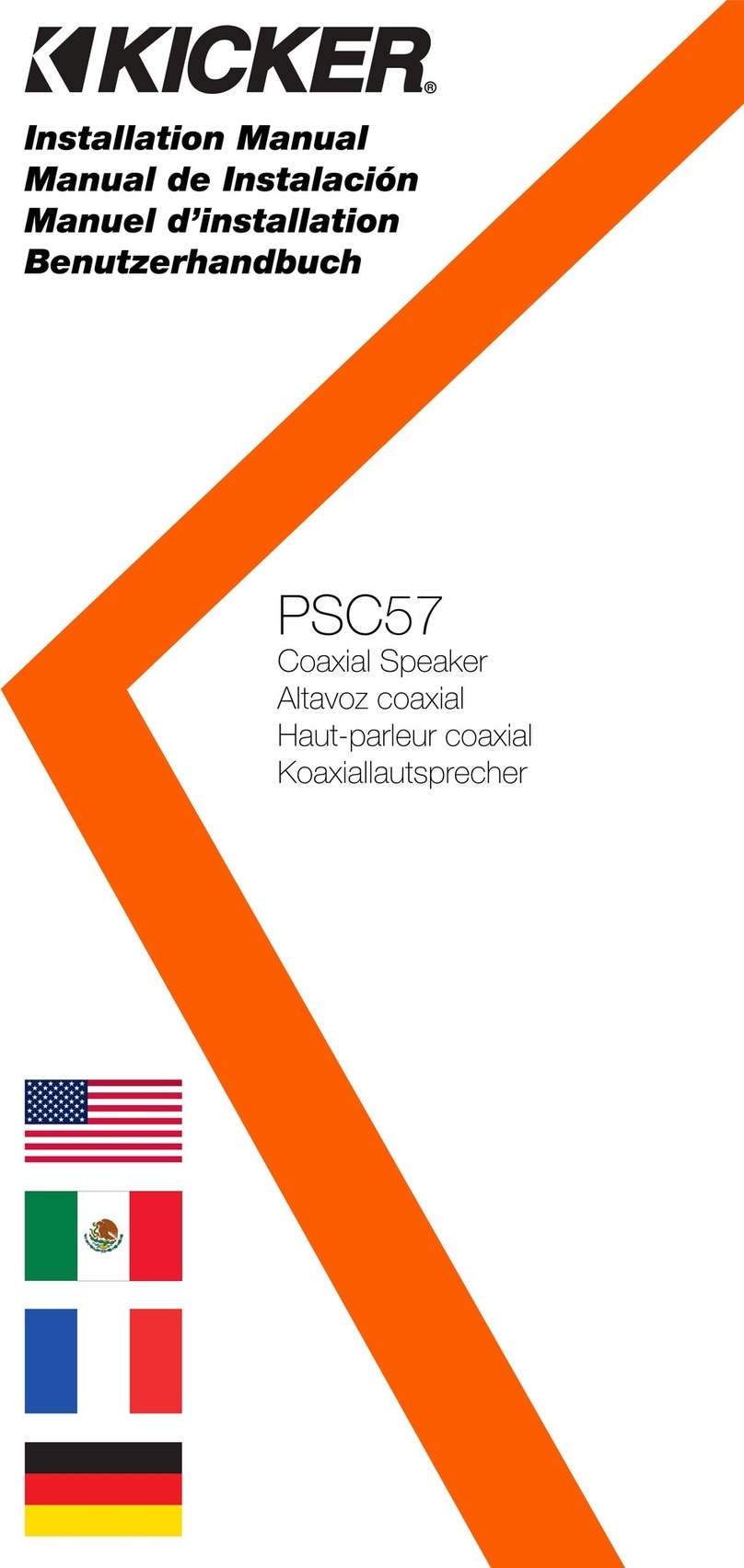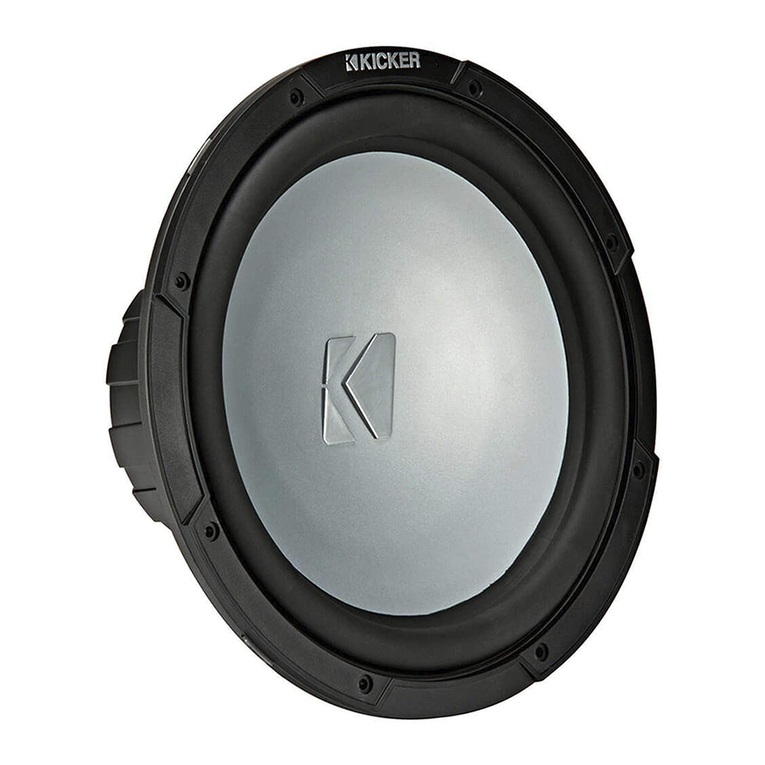2
KS COMPONENT SYSTEM
Owner’s Manual
MODELS: KSS50 | KSS650 | KSS670
PERFORMANCE
KS COMPONENT SPEAKERS
The KICKER KS speakers offer an excellent upgrade to your vehicle’s factory sound system, delivering great
full-range sound at an amazing value! Whether dropping the KS speakers in a factory location or customizing
your install, their high-efficiency design means less power is needed to play your music, while our use of
advanced materials and construction techniques ensures optimal performance for years to come.
IMPORTANT SAFETY WARNING
Prolonged continuous operation of an amplifier, speaker, or subwoofer in a distorted, clipped or over-
powered manner can cause your audio system to overheat, possibly catching fire and resulting in serious
damage to your components and/or vehicle. Amplifiers require up to 4 inches (10cm) open ventilation.
Subwoofers should be mounted with at least 1 inch (2.5cm) clearance between the front of the speaker and
any surface.
KS Component Speakers KSS50 KSS650 KSS670
Woofer [in, mm] 5-1/4, 130 6-1/2, 160 6-3/4, 165
Tweeter [in, mm] 1, 25 1, 25 1, 25
Dome Material Silk Silk Silk
Rated Impedance [Ω] 4 4 4
Peak Power Handling [ Watts] 200 250 250
Continuous Power Handling [Watts RMS] 100 125 125
Sensitivity [1W, 1m] 88 90 91
Frequency Response [Hz] 38-21k 35-21k 35-21k
Woofer Mounting Hole Diameter [in, mm] 4-1/2, 115 4-13/16, 123 5-9/16, 141
Woofer Top Mount Depth [in, mm] 1-3/4, 45 1-13/16, 46 1-13/16, 46
Flush Mount Tweeter Hole Diameter [in, mm] 1-3/4, 45 1-3/4, 45 1-3/4, 45
Flush Mount Tweeter Depth [in, mm] 11/16, 17 11/16, 17 11/16, 17
High Pass [dB], at Frequency [Hz] 12, 4,000 12, 4,000 12, 4,000
Low Pass [dB], at Frequency [Hz] 12, 4,000 12, 4,000 12, 4,000
High Frequency Output Attenuation [dB] 0, 4.5, 9 0, 4.5, 9 0, 4.5, 9
Note: All specifications and performance figures are subject to change. Please visit www.kicker.com for the
most current information. To get the best performance from your new KICKER speakers, we recommend using
genuine KICKER accessories and wiring. Please allow two weeks of break-in time for the speakers to reach optimum
performance.
Pro Tip: You’re a KICKER amplifier and a few cables away from a full system upgrade that will dominate
any factory system! KICKER line of amplifiers make it easy to upgrade to solid bass with your existing or
stock source unit. Also, ask your dealer about KICKER Subwoofer upgrades.
2017 KS Component Rev B.indd 22017 KS Component Rev B.indd 2 8/23/2016 12:22:40 PM8/23/2016 12:22:40 PM

